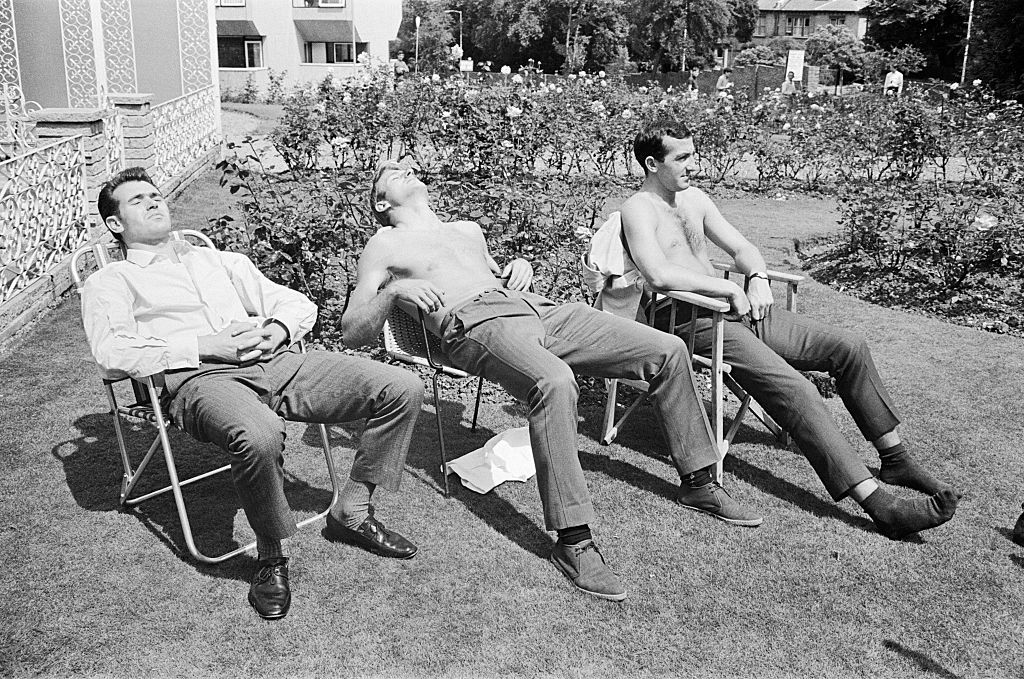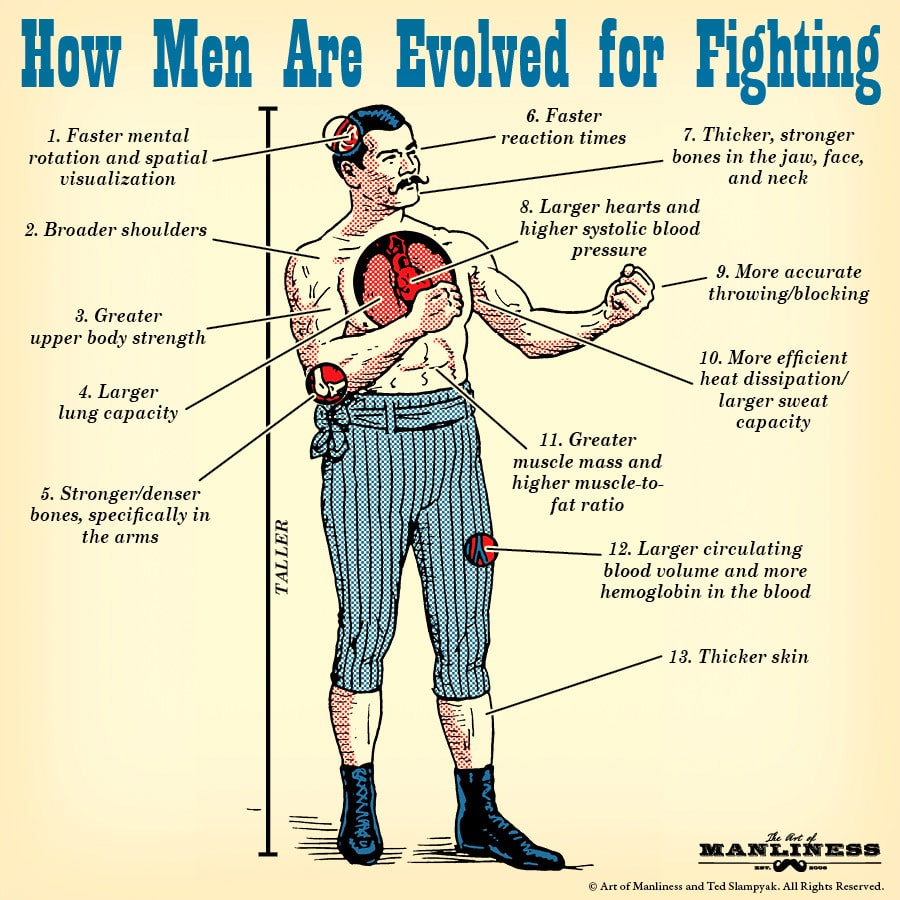
With our archives now 3,500+ articles deep, we’ve decided to republish a classic piece each Sunday to help our newer readers discover some of the best, evergreen gems from the past. This article was originally published in July 2020.
Have you had a depressing and demoralizing few weeks, or years? One of the best ways I’ve found to shake off the blues is to stand on the side of the shallow end of my pool, my arms folded on the deck, my back facing the sun. As the rays absorb into my skin, stress melts away and calming, almost-euphoric vibes percolate through my brain. It feels like my body is a battery that the sun is literally recharging.
You’ve probably had this experience whilst soaking up some rays too. And yet for a lot of folks, it’s an experience they can’t unequivocally enjoy, that’s tinged with some guilt. Sure, lying out in the sun feels good in the moment, but so does smoking a cigarette. We’ve been taught that sun exposure is bad for you — that it causes skin cancer and should be avoided as much as possible.
While sun exposure does indeed carry some dangers, we have arguably taken its risk too far. In all the warnings about the sun, the fact that its rays boost both mental and physical health in some very significant ways — and our ancient instinct as to the truth of this — has gotten lost. A restoration of our relationship with the great fiery ball in the sky is in order.
Peoples in every civilization around the world, from Mexico and India to Egypt and Germany, once worshipped the sun as part of their religion. While you need not bend a literal knee to the life-giving star at the center of our solar system, you ought to consider making sunbathing a part of your daily ablutions, turning the catching of rays into a regular ritual, putting the sun back in Sunday.
How Soaking in Sunlight for Health Fell Out of Favor

As the most democratic resource on the planet, an inextinguishable source of warmth and light, and the celestial power which gives life to everything on earth, humans have quite naturally always been drawn to the sun, and have attributed health and healing properties to its rays for millennia.
The ancient Egyptians thought if you exposed your balding head to the sun, it would help hair regrow. The Greek physician Hippocrates recommended sunbathing for its healthifying effects, and many aristocratic Greeks and Romans had solariums in their homes to partake in this solar therapy.
In the 19th and 20th centuries, doctors used the vitamin D-generating effect of sunlight to effectively treat and prevent tuberculosis, as well as rickets, which became a bone-weakening scourge in some countries as urbanized children began to spend less time outside. Up through the middle of the 20th century, sanitariums and health resorts utilized sunbathing and UV lamps to treat all kinds of ailments, as well as to simply increase the wellness of the already hale and hearty.
Beginning in the second half of the 20th century, however, solar rays began to be associated with danger and death. Starting in the 1960s, dermatologists began sounding the alarm on the link between sunlight and skin cancer. Campaigns began in the United States to get people to reduce the time they spent in the sun, and to slather on sunscreen whenever they were going to be spending a significant amount of time exposed to its rays.
By the end of the 20th century, dermatologists began to recommend that people not only put on sunscreen if they were going to the beach, but to apply it every day as a matter of course because, the thinking went, even a little bit of sun is potentially cancer-causing. Plus, the sun makes your skin look old, and who wants to look old? Daily moisturizers began to be made with built-in sunscreen to protect faces from even the kind of incidental sun exposure one might get while driving to work or walking in and out of a grocery store.
In recent years, however, some scientists and dermatologists have begun to question the accepted wisdom around avoiding the sun. Their research is showing that there’s much we stand to lose in terms of health and vitality by excessively avoiding sunlight and blocking its rays with sunscreen when we do go out. In fact, many of these health experts are arguing that too little sun may actually kill more people than too much sun. Journalist Rowan Jacobsen highlights a few of these renegade dermatologists in a thoroughly interesting article he wrote for Outside Magazine called “Is Sunscreen the New Margarine?”
After I read that article last year, it kickstarted my own research journey into understanding the relationship between sunlight and health. Thanks to my research, I’ve made getting sun a regular part of my lifestyle. Here’s why you might consider doing likewise.
The Anatomy of Sunlight
To understand the effects of sunlight, you need to understand its composition because the different elements of sunlight influence different things in our bodies.
Ultraviolet radiation. Sunlight is composed of three types of ultraviolet radiation: A (UVA), B (UVB), and C (UVC). UVA and UVB have the greatest effect on human physiology and we’ll be talking about them throughout this article.
Visible light. This is the light you can see with your naked eye and that when cast through a prism makes that Pink Floyd ROYGBIV rainbow on the wall. Different parts of the visible light spectrum, like blue light, influence our sleep cycle.
Infrared radiation. Infrared is invisible to the naked eye. While there are studies that show infrared radiation can be used for health treatments, I didn’t come across any research that pointed to this component of sunlight as being beneficial.
The Health Benefits of Sunlight

Sunlight Increases Vitamin D Levels
If you’ve spent any time reading health books or blogs, you know that sunlight allows our bodies to make vitamin D. Particularly, it’s the UVB rays in sunlight that kickstart vitamin D synthesis: your skin contains cholesterol, and when UVB strikes this epidermal cholesterol, a chemical reaction begins which turns it into vitamin D.
Vitamin D isn’t actually a vitamin. It’s a prohormone (a precursor to a hormone) that the body uses to make all its hormones from insulin to testosterone.
Because of its integral role in hormonal health, low levels of vitamin D have been associated with a bevy of health issues, including:
- Depression
- Osteoporosis
- Cancer
- Low testosterone
- Diabetes
- Cardiac disease
- Stroke
It’s hard to get sufficient vitamin D from diet alone, as it’s only found in a few foods, like fatty fish. You could get vitamin D from an oral supplement rather than from the sun, but the latter source beats the former for several reasons: 1) The sun is free. 2) While it’s possible to dangerously overdose on supplemental vitamin D, it’s not possible to overdose on the version your body makes from the sun, as it shuts down the conversion process once it has enough. 3) As we’ll explain below, while vitamin D itself is associated with positive health outcomes, the vitamin, apart from sunlight, may not in fact always be the operative factor in catalyzing these benefits.
Is It the Vitamin D or the Sunlight?
Because we spend less time outdoors than previous generations and we’re using more sunscreen, 43% of Americans have a vitamin D deficiency. Consequently, during the past few decades, many doctors and health experts have recommended that Americans take an oral vitamin D supplement. Up until a few years ago, I popped one myself every morning.
But then I started reading studies that showed vitamin D supplementation actually doesn’t do much for health.
For example, our bodies need vitamin D to absorb calcium and mineralize our bones, which makes them denser and stronger. Yet a 2018 study showed that vitamin D supplementation didn’t do anything to improve bone health.
Some studies have shown an association between low vitamin D levels and increased risk of cancer, cardiac disease, and stroke. But the results of one of the largest and most rigorous studies of vitamin D ever conducted, in which the trial’s 25,871 participants received high doses of the vitamin for five years, found that it had no impact on these conditions.
So what’s going on here? If low levels of vitamin D are associated with poor health outcomes, increasing vitamin D levels through supplementation should improve health, right?
Some researchers are starting to make the case that we’ve confused causation with correlation on this issue. Instead of vitamin D being directly linked to improved health outcomes, it may be that sunlight itself is the thing that’s providing all of those health benefits, while someone’s level of vitamin D is just a marker that they’re getting a sufficient amount of sunlight.
It may seem like a surprising theory, but below we’ll highlight research which shows that many of the health benefits we associate with vitamin D are more likely caused by the other health-improving effects of sunlight. So that again, vitamin D may just be a sign that you’re getting enough sun to trigger those other beneficial reactions.
This isn’t to say there are zero health benefits that are directly influenced by vitamin D alone. But what these studies suggest is that we should look deeper into claims saying that increasing vitamin D intake, particularly via an oral supplement, will necessarily lead to direct health improvements.
Sunlight May Reduce Incidences of Some Cancers
While sunlight is one of the biggest contributing factors to skin cancer (more on that below), studies have shown that getting adequate amounts of sunlight is associated with lower incidences of many other types of cancer, including prostate cancer, colon cancer, and leukemia.
The research suggests that sunlight’s role in preventing cancer has mainly to do with vitamin D (though the complex correlation/causation issue is of course in play, since again, oral supplementation with vitamin D does not seem to affect the incidence of the disease).
While it’s impossible to completely eliminate the chances of being diagnosed with cancer, eating right, exercising, and getting some sun can help mitigate the risk.
Sunlight Decreases Blood Pressure
Scientists who have researched cardiovascular disease have noticed that rates of high blood pressure, stroke, and heart disease correlate with how near or far you are from the Earth’s equator: the closer you live to the equator, the more your chances of suffering from cardiovascular disease go down; the further you live from the equator, the more your chances go up.
The research suggests that this dynamic has something to do with sunlight. The closer you are to the equator, the more direct sunlight you get; the further you are, the less you get.
So how exactly does sunlight impact your cardiovascular system?
Dermatologist Richard Weller has recently discovered a biological pathway that allows our body to create a substance called nitric oxide. When nitric oxide gets into your bloodstream it dilates blood vessels and causes blood pressure to drop. Our body happens to keep a huge store of nitric oxide in our skin.
And what causes our skin to release those nitric oxide reserves into our bloodstream?
Sunlight. Particularly, the UVA portion of sunlight.
This finding suggests that getting regular exposure to sunlight can help prevent or reduce the incidences of an array of cardiovascular diseases. In fact, research is coming out that shows that sunbathers have less incidences of heart problems than people who spend more time indoors. For example, Pelle Lindqvist, a Swedish health researcher who has studied the sunbathing habits of 30,000 Swedish women for the past 20 years, found that rates of blood clots went down significantly among women who spent more time in the sun, particularly during the winter.
More research on this biological mechanism is needed, but the findings so far are promising. In addition to eating a healthy diet and getting regular exercise, getting enough sun may be an important part of a heart-healthy lifestyle.
Sunlight May Reduce Insulin Resistance
Type-2 diabetes has increased significantly among Westerners for the past several decades and is now the seventh leading cause of death in the United States. When you get type-2 diabetes, your body’s cells become resistant to insulin. Insulin is the hormone that tells your cells to open up and let glucose in so the cells can get energy. If your cells become resistant to insulin, they stop opening up for glucose, causing blood sugar to spike to unhealthy levels in your bloodstream. This can cause myriad health problems, including kidney failure, heart disease, blindness, and blocked blood vessels (which can lead to tissue death, which can lead to limb amputation).
A healthy diet, exercise, and sleep can go a long way in preventing and managing diabetes. But research suggests that sunlight may play a role in preventing insulin resistance too.
Multiple studies have found that people who get more sunlight have lower blood sugar levels. A metaanalysis of all these studies produced moderate evidence that sun exposure can reduce the risk of type-2 diabetes.
So what is it about sunlight that helps with blood sugar levels?
The original hypothesis was that since sunlight increases levels of vitamin D and people with healthy levels of vitamin D had less incidences of diabetes and pre-diabetes, then there is something about vitamin D that helps keep blood sugar in check.
But then studies started coming out that vitamin D supplementation didn’t do much for blood sugar levels, meaning there may not be a connection between the vitamin and diabetes after all.
Now researchers are exploring whether there’s something about sunlight, apart from vitamin D, that helps with blood glucose. We still have no leads on this, but it will be interesting to see what the research uncovers.
In the meantime, catch some rays to keep diabetes at bay.
Sunlight Strengthens Immune Function
Want to get sick less? Get more sun.
Sunlight appears to strengthen immune function in two ways. First, it creates vitamin D, and countless studies have shown that vitamin D plays an important role in immune function. Of particular relevance in our current time, research suggests that vitamin D may help reduce both the risk of infection and the severity of symptoms from COVID-19.
The second way that sunlight boosts the body’s ability to fight infection is by enhancing the performance of our T-cells. T-cells attach to invading viruses and bacteria and render them harmless. Sunlight helps our T-cells mobilize faster by stimulating hydrogen peroxide production — which is what causes our T-cells to move to an infection in the body.
While getting plenty of sun won’t completely eliminate the chances of you getting sick, the research suggests that it can definitely help you stay healthy and better fight off the infections you do get.
Besides strengthening the immune system to fight foreign invaders, sunlight can kill viruses and bacteria that sit on surfaces, preventing them from getting into your body in the first place. “Sunlight is the best disinfectant” is not only a metaphorical maxim but a literal truth: UVR has been shown to kill viruses like the flu and COVID-19, as well as bacteria like anthrax, e.coli, and tuberculosis.
Sunlight can also help with autoimmune diseases.
Sometimes the immune system goes haywire and instead of attacking foreign invaders, it attacks normal parts of the body, resulting in chronic, unhealthy inflammation. The result is an autoimmune disease. Rheumatoid arthritis, MS, and inflammatory bowel disease are a few examples of autoimmune diseases.
Some research suggests that frequent sun exposure can reduce the chances of getting an autoimmune disease. For example, studies have shown that individuals living further away from the equator have an increased chance of being diagnosed with an autoimmune disease compared to individuals living closer to the equator.
For some individuals who have already been diagnosed with an autoimmune disease, sunlight can help keep their immune system in balance thanks to its vitamin D and T-cell boosting properties.
It should be noted, however, that some autoimmune diseases, like lupus, result in photosensitivity, which can make being out in the sun unpleasant and painful. So if you have an autoimmune disease, talk to your doctor before you try some sun therapy.
Sunlight Reduces Myopia
When someone has myopia, also known as near-sightedness, they can see things that are close clearly, but have a difficult time seeing things which are far away.
Myopia has been increasing among children across the world. China has seen the most dramatic rise in this disorder: 60 years ago, 10-20% of young Chinese people were myopic; today, close to 90% are.
While the rise in myopia hasn’t been as great in the United States, it’s up 25% compared to 40 years ago.
Technology is the most obvious suspect in this rise; with kids today spending so much of their time staring at screens a few inches away from their faces, an increase in near-sightedness seems inevitable.
But research is emerging that it’s not the screens themselves that’s causing myopia, it’s the lack of sunlight children are experiencing . . . because they’re indoors staring at their screens.
When sunlight hits your eye, dopamine is produced in your eye which helps prevent the eyeball from elongating. Elongation of the eyeball is what causes the refraction issue that leads to myopia. It also appears that nitric oxide — which, you’ll remember, sunlight also boosts — plays a role in inhibiting elongation of the eyeball as well.
Now that health officials are starting to understand the connection between myopia and sunlight, China is seeking to reduce the number of young people who get the disorder by making it a policy that kids get outside more during the school day. No matter where you reside, you needn’t wait for a government mandate to get outdoors and stop spending all your time tunneling inside like a mole.

Sunlight Improves Mood
We typically associate sunny days with happiness and feeling groovy. That’s because sunlight kickstarts the production of a whole host of feel-good chemicals in our brains. Scientists in Australia have found that sun exposure increases levels of serotonin, a neurotransmitter that plays a big role in positive moods and staving off depression.
Sunlight also increases levels of dopamine in our brains which heightens our sense of motivation, excitement, and drive.
Finally, sunlight releases endorphins — mood-boosters that can make us feel practically high and euphoric.
Since getting sun requires being outside, and being outside is also associated with a bunch of mood-enhancing effects, sun + nature = a super cocktail of positive vibes.
So if you’re feeling down, get outdoors and soak up some sun.
Sunlight Improves Sleep
Your body’s circadian rhythm is like an internal clock that governs when you feel awake and when you feel tired. The primary factor that influences this clock is light. Exposure to light, especially the blue light which is part of sunlight’s visible spectrum, suppresses the hormone melatonin and increases attention and alertness; light basically tells the body: “Hey, I better perk up because it’s daytime.” When natural light dissipates after the sun sets, melatonin increases as the body winds down in preparation for sleep. The sunlight-mimicking blue light that’s emitted from electronic devices can disrupt this process, which is why doctors recommend limiting your exposure to it at night.
But if you really want to optimize your sleep, you need to do more than avoid blue light in the evening; you need to make sure you get plenty of sunlight during the day, too. Sunlight exposure in the morning and throughout the day ensures that you maintain a healthy sleep-wake cycle. For example, studies have shown that office workers who get more sun during the day via windows in their workplace, tend to sleep better at night compared to people who work in windowless rooms; one imagines the effect would be even greater for those who are exposed to sunlight directly.
But Doesn’t Sun Exposure Cause Skin Cancer?
“Alright,” you might be saying, “so there are some health benefits to sun exposure. But sunlight is the main cause of skin cancer. Cancer is deadly so it makes sense to avoid direct sun exposure and slather on sunscreen every day.”
Yes, it is true that sunlight causes skin cancer. But as Rowan Jacobsen notes in his article about sunscreen, “several different diseases are lumped together under the term ‘skin cancer.’”
Two types of skin cancers are actually pretty common, but rarely deadly: basal-cell carcinomas and squamous-cell carcinomas. They can be removed with surgery or sometimes right at the dermatologist’s office. The cure rate for basal-cell carcinomas is 97% to 99%; the cure rate for squamous-cell carcinomas is between 92% and 97%.
The type of skin cancer you have to worry about is melanoma. Unlike the more benign types of skin cancers, melanoma is more likely to spread to other parts of the body which makes it more deadly. For example, the 5-year survival rate for melanoma that’s spread to the lymph nodes is 64%. If it spreads to more distant parts of the body (like the liver, kidneys, etc), the 5-year survival rate plummets to 24.8%.
So yeah, melanoma is deadly. You don’t want to get melanoma.
But it’s also rare. Melanoma only accounts for 1% of new skin cancers. White people are the most likely to get it with a still-low 2.6% lifetime risk. Darker skin contains more melanin, which acts as a natural protection to sun damage and lowers the risk of getting melanoma even further. Hispanics have a .6% lifetime risk of getting melanoma; for African-Americans, it’s .1%.
When people feel freaked out about sunlight and skin cancer, it’s often because they’re conflating the commonness of benign skin cancers with the deadliness of melanoma. They think “skin cancer is common, and it’s frequently deadly, so I better become a Boo Radley and never see the light of day again without slathering on sunscreen.” The reality is that skin cancer is common, but rarely deadly.
Not only is melanoma rare, it counterintuitively strikes more people who work indoors than people who work outdoors. One study found that men who work outdoors have about half the risk of melanoma as men who work indoors.
Why would that be the case? One working theory is that as you spend more time outdoors, your body adapts and creates melanin that protects your skin from melanoma. People who spend most of their time indoors and then blast their body with sun every now and then don’t have that protective melanin, which increases their risk of getting melanoma.
So oddly, avoiding the sun may actually increase your chances of getting the more deadly type of skin cancer. Go figure.
Understanding the benefits and risks of sun exposure is causing some dermatologists to do some cost-benefit analysis when it comes to the advice they give patients about sunlight and sunscreen.
For example, dermatologist Richard Weller argues that while it is true that sunlight is one of the major contributing factors to skin cancer, this has to be balanced with research that shows that it provides an enormous benefit to cardiac health.
More people die of cardiac disease than skin cancer. In fact, for every one person who dies of skin cancer, 100 die of cardiac disease.
If sunlight rarely kills people by causing skin cancer, but can help improve cardiac health, wouldn’t it make sense to encourage people to get more sunlight?
The trick to this cost-benefit calculus is to figure out how much sun you need in order to get the benefits while mitigating the very real risk of skin cancer.
So How Much Sunlight Do You Need?

Well, it depends on how pasty or swarthy you are.
The more melanin you have, the more sunlight you need to get the benefits from the sun’s rays; the less melanin you have, the less amount of sun exposure you need.
So lighter-skinned people need less sun exposure; darker-skinned people need more.
This is important to point out because for the past few decades many dermatologists have been giving blanket, one-size-fits-all advice on avoiding sun exposure and using sunscreen that doesn’t take skin color into consideration.
As mentioned above, melanin acts a natural protection against sun damage and sunburns, so that people with darker, more melanin-rich skin have a smaller risk of getting skin cancer compared to people with fairer skin. Telling people of color, who need more sunlight, to put on sunscreen and to avoid the sun like fair-skinned people may be one of the many factors which contribute to the divergent health outcomes between black Americans and white Americans. So keep that in mind if you’re darker skinned.
Beyond the skin color consideration, there aren’t hard rules about how much sun you need for health. Even among the scientists and dermatologists who are open to the idea that sun exposure without sunscreen is beneficial, there’s a split as to what constitutes an optimal dose of it.
One group argues that as long as you don’t burn, you’ll be fine. That gives a lot of leeway to the individual and requires people to be vigilant about how their skin is doing in the sun.
Another group offers a more conservative recommendation and suggests that people only get 10 minutes of sun a day on 35% of exposed skin without sunblock.
Whatever recommendation you take, there’s a consensus around avoiding sunburns at all costs. Nothing good comes from getting sunburned.

A few other things to keep in mind as you figure out how much un-screened sun to soak in: During the summer, you’ll need to spend less time in the sun as you get more direct rays. 10 to 20 minutes is usually all that’s needed. In the winter, you’ll need to spend more time, up to an hour.
UV index is highest from 10 a.m. to 2 p.m., so you can get all the sun you need in just a few minutes if you do your sunbathing then. Outside of those times, you’ll need to spend longer to get the benefits of the sunlight. Again, it’s hard to give exact times. Just don’t burn.
The Sunlight Institute recommends that you gradually increase sun exposure so your body can adapt. As your skin is exposed to more sunlight, it will produce more melanin and you’ll develop a tan, which will allow you to stay in the sun longer. Start off with a few minutes each day and gradually increase the time.
If you have a skin color that doesn’t tan, i.e., you’re very fair skinned and tend to go straight from white to red, you likely won’t be able to increase your exposure. Just get a few minutes each day before putting on sunscreen and/or clothes to protect your skin.
If you’re darker skinned, you can start off spending more time in the sun than lighter-skinned people. But while sun damage and sunburns are less likely to happen to people with darker skin, they’re still possible and you’ll still want to watch that you don’t get too much exposure.
No matter the color of your skin, when you’re going to be exposed to sunlight beyond the modest amounts recommended above, you should wear sunscreen, hats, clothing, etc., and avoid baking directly in the sun for too long. It can’t be reiterated too much that while sunlight promotes health in limited doses, excessive exposure, and the skin damage and sunburns which result, still remain deleterious and dangerous.
Getting Sun When There’s Not Much Sun

Getting sun during the summer is pretty easy. But what do you do during the winter if you live in an area that doesn’t get much light?
During the year’s cold, gray months, make an effort to get outside as much as you can when the sun is out. The easiest way to do that is to simply take a walk. Put on your coat and scarf and walk for 15 minutes a couple of times a day. Of course, you’re only getting sun on your face/scalp when you’re all bundled up, so if it’s not too frigid and you can tough it out, try taking a stroll in a t-shirt.
But what if you live in an area that’s perennially overcast during the winter, even during the day?
Well, you might consider visiting a tanning salon. Tanning beds/booths have been much maligned in the past few decades, with news stories comparing a visit to one with smoking a pack of cigarettes.
There’s truth to these warnings: the frequent and prolonged use of tanning booths can indeed significantly increase your risk of skin cancer.
But research has shown that (when used judiciously) tanning booths that emit 95% UVA rays and 5% UVB rays (roughly the same makeup as natural sunlight) can also provide many of the same health-boosting benefits as natural sun exposure. (Some tanning beds don’t emit any UVBs; look for those that do.)
The key is to just be smart about using them. Go a few times a month and keep your sessions short. Start off with the least amount of time and gradually increase from there.
A few years ago, we had a December and January here in Tulsa, OK that was particularly cold and gray. I was feeling pretty bummed out and just super fatigued. I tried all of my usual tricks to leash the black dog, but nothing worked. Kate, who had also read Jacobsen’s article, suggested I go lie in a tanning bed for a few minutes, something that I, who’s already fairly swarthy as is, had never done in my entire life and never imagined myself doing.
“No way. Do I look like Pauly D. to you?”
“You probably need some sun and you’re not getting any with how the weather has been these past few months. Just give it a shot. You’ll only lose a few minutes of your life,” Kate countered.
I happened to have a membership at a nearby 10 Gym (not to work out, but just so I could use their sauna). The gym had tanning booths available, so I drove over there and signed up for a five minute session in one. And I’ll be damned if I didn’t feel pretty good afterwards. So good, I tanned about once a week for the rest of the winter. My blahs and fatigue subsequently abated.
All hail the healing properties of UV radiation!
Humans have oriented themselves towards the light and power of the mighty sun since time immemorial. If you’ve been feeling sickly, fatigued, and downcast, you may need to step into the temple of the outdoors, shed your shirt, raise your pallid arms to the sky, and become something of a sun worshipper yourself.
______________________________
Sources
Here Comes the Sun by Steve Jones
Embrace the Sun by Marc Sorenson
“Is Sunscreen the New Margarine?” by Rowan Jacobson







